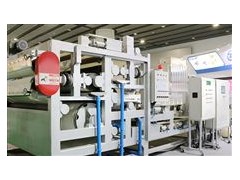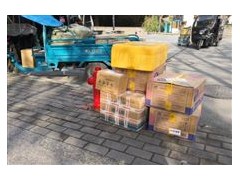From "don't get dirty and don't wash your hands" to "wash your hands carefully and frequently", from "desire to unpack" to "disinfect when you pick up the package", from "don't want to wear a mask" to "running naked without a mask"... The above changes reflect the real life of most people in recent years. People have become more health-conscious, concerned about the environment and hygiene, and want to stay away from germs and viruses. With the improvement of the public's "health" awareness, antibacterial materials have also become a "new fashion" in the consumer field, such as comprehensive antibacterial steering wheels, smart toilet antibacterial seats, fashionable fresh antibacterial clothing and so on. In daily life, there are still many "hardest hit areas" that endanger health and hygiene and are ignored by many people, including cold chain food packaging that people often come into contact with. Thai durian, Chilean cherries, Nordic salmon, Australian breaded crab... The increasingly developed cold chain logistics brings convenience, but also brings hidden dangers. The packaging safety of cold chain food is increasingly valued. According to a study published by China CDC Weekly, frozen food and its outer packaging may serve as the transmission vector of the new coronavirus, which puts relevant practitioners at high risk of virus exposure. On the clean and hygienic cold chain food packaging, not only viruses may be attached, but dozens of pathogenic bacteria are often hidden. Improper handling can easily cause respiratory and gastrointestinal diseases, skin diseases, and even pneumonia, sepsis, etc. Serious threat to people's health and safety. So, how can cold chain food packaging achieve real "health"? Relevant experts said that in addition to being vigilant against viruses at all times, strengthening "material defense" and inhibiting the spread of viruses and germs, antibacterial should also be started from the source, and antibacterial packaging materials should be selected. only a two-pronged approach can achieve better antibacterial and antibacterial effects. As a part of circulation and use that is often directly contacted by people, if the outermost layer of the package is made of antibacterial materials, it can largely cut off the infection path of pathogenic microorganisms, thereby prolonging the stagnation period of microorganisms, slowing down the growth rate of microorganisms, and reducing the number of microorganisms. The antibacterial effect of the surviving quantity can effectively prevent the spread of various cold chain food germs. It is worth mentioning that the long plastic antibacterial BOPA has been certified by the international authoritative testing organization SGS, and has excellent antibacterial performance against common Gram-negative and positive representative bacteria Escherichia coli and Staphylococcus aureus, and the antibacterial rate is ≥99.9%. It is understood that the long-plastic antibacterial BOPA uses Coulomb gravity to make the antibacterial agent firmly adsorb and destroy the electrolyte balance of the cell when it contacts with the microbial cell. And other cold chain food to provide security.
- 卖家服务
- For Buyers
- Help
-
Mobile

H5 Mobile
Faster mobile access

WeChat official account
Mobile phone sign in to win points

WeChat applet
Play with new mobile marketing
- English




